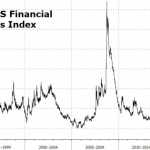Summer is long gone. The mood swing in markets last week was attributed mostly to US trade uncertainty and the FOMC rate hike but underneath all of the soggy price action is a feeling that the storyline driving markets in the summer – “Goldilocks” is transforming into something else.
US divergence continues with the US economy growth, inflation and outlook remaining robust.The EU is different with ECB expectations of tapering high but growth moderation continuing and clearly not breaking out like the US. China is expected to moderate further as trade tariffs kick in and Japan, while doing better with BOJ Kuroda and PM Abe still very much in charge, shows trade issues as well.
Perhaps the biggest shift over the summer was in emerging markets and the hope in 4Q is that there is a return to bargain hunting investment flows supporting growth and currencies there – but the Brazil election, deepening recession in Argentina and Turkey and ongoing pain in South Africa and India suggest this is more than idiosyncratic outflows.
The role of China and trade tariffs is one shift to consider as investors jump into October and 4Q. The view of the summer, that a Mexico deal on trade would lead to a new NAFTA with Canada, better deals in Europe and eventually one with China has stalled. South Korea and hopes for Japan are the exception and the hope over the last week. Nevertheless, the fear of a prolonged trade war is being priced.The view on US an EU politics also changed as hopes for the new Italian coalition playing by the rules on budgets ends and as the US mid-term elections loom.
Hopes for further stimulus spending in the US – infrastructure and more tax cuts – clash with the realities of the growing deficit and expectations of a gridlocked Congress. The market last week did something very different with the USD gaining and stocks losing. This shift matters and might be important if it continues into October and the heavy economic data. The breakout of the USD index over 95 opens 95.70 and risks for 98 again. This may reopen the talk of CNY 7.00 busting, restart 115 JPY and 1.14 EUR. The USD gains run on back of FOMC rate policy, US growth and the view that the US can outlast China in any prolonged trade war.

What Happened over the Weekend?
The US and Canada are near a NAFTA deal according to Bloomberg. Claims that progress has been made on key issues came from Fox News Saturday with Peter Navarro. Implication for C$ gains into Monday on any announcement are high – with 1.2880 pivotal USD support, then 1.2550.

Also over the weekend another set of horrible weather and natural disasters with Indonesia suffering a tsunami that kills over 800 people after a 7.4 quake. Japan facing another storm and the US Southwest braces for flooding from hurricane Rosa. The US sends a warship through the contested South China sea islands. In politics, Iraqi Kurds hold a parliamentary election today and the German far-right AfD is polling second place. The economic data released early from China given it’s a holiday week and it’s mixed with Services up and Manufacturing down, the composite index is up but not back to Spring levels.


Question for the Week Ahead: What if the FOMC is closer to tightening policy?
The debate on rates mattering in the US continues to matter but the focus last week was more on trade policy, politics and the rest of the world. Next week, the US data on jobs and ISM will set the tone for how 3Q sets up 4Q for continued growth. The outlook for US growth in 4Q is likely to be shifting higher and with it rate hike expectations – as the market prices in just 1 hike but the FOMC has 3 in 2019.
The other consideration for Fed watchers is that subtle but important shift that NY Fed Williams highlight Friday – the ditching of forward guidance.This means the “gradualism” of policy maybe more about data reactions putting higher uncertainty into markets and leaving the burden of the economy to drive policy reactions.This makes the forecasting game about 4Q that much more interesting.

The 3Q forecasts have clearly been too low to the data so far – putting the US jobs report front and center to shifting up outlooks. Expectations matter in an economy running hot and the confidence boost in both consumers and corporations has held well over the summer. What matters next will be real 3Q earnings for companies and their outlooks for 4Q. The bottom up analysis from FactSet on the street view for owning shares is worth considering in the context of growth and risks for 2019. The market seems convinced that 2020 will be recessionary.














Leave A Comment